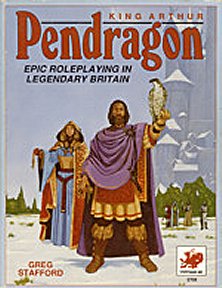Here are the tables I've been using for stocking castles and villages around the wilderness in conjunction with "The Wilderness Architect."
My intent with these tables was to make them a little less overtly magical, so fewer chimera or basilisk guardians, and more complete than the ones presented in Underworld and Wilderness Adventures.
Castle Occupant
Castle
occupants are generally high level NPCs retired from adventuring, warfare, and
other similar activities where experience may readily be gained.
Alignment
should be rolled, not only for Lords, Wizards and the like, but for each
classed NPC or group of like NPCs within a castle, town, or village. This
creates a sort of factionalism that will lead to more interesting scenarios
later on.
1
|
Lord
|
1,
2
|
Lawful
|
|
2
|
Superhero
|
3,
4
|
Neutral
|
|
3
|
Wizard
|
5,
6
|
Chaotic
|
|
4
|
Necromancer
|
|||
5
|
Patriarch
|
|||
6
|
Evil
High Priest
|
|||
Other Residents
In
typical castle, 30-180 men will man the walls, half of whom will be crossbow
armed light foot and the balance will be heavy foot. There is also a chance
that there will be others in the castle’s party:
Castle Resident
|
% Chance of
Having
|
Level
|
Fighting-Men
|
75%
chance for 2-12 Knights
|
3-6
|
25%
chance for Magic-User
|
5-8
|
|
50%
chance for Cleric
|
3-6
|
|
5%
chance for Monsters
|
||
Magic-User
|
50%
chance for Fighting-Man
|
5-8
|
50%
chance for Apprentice
|
4-7
|
|
10%
chance for Monsters
|
||
Cleric
|
50%
chance for 1-6 Assistants
|
4-7
|
50%
chance for 3-18 Fighting-Men
|
2-5
|
|
5%
chance for Monsters
|
N/A
|
Fighting-Men
will typically be formed into an order of Knights or Templars, who may be sent
out on quests or crusades and act as commanders in the ruler’s army in war
times.
Monsters
should be rolled based on the type of hex terrain the castle is built on from a
list of like-aligned monsters. Thus a Chaotic ruler will be served only by Chaotic
monsters while a Lawful one by Lawful monsters.
Town and City
Residents
There is
a chance that villages, small towns, large towns, and city will small
percentage of local Fighting-Men, Magic-Users, Clerics, and Thieves. Residents
of these classes will generally form themselves into companies, guilds, and
churches if there is enough of a certain class or warrant such. Alternatively,
Fighting-Men may be of lesser nobility lording over the village. Levels will be
from 1-4.
Fighting-Men
|
Magic-Users*
|
Clerics*
|
Thieves
|
|
Village
|
10%
|
5%
|
5%
|
-
|
Small Town
|
25%
|
10%
|
10%
|
10%
|
Large Town
|
50%
|
25%
|
25%
|
25%
|
City
|
85%
|
50%
|
50%
|
50%
|
*
Use column for Fighting-Men if castle occupant is over this class.
Magic Items
Castle
rules and other resident NPCs may possess magic items with a chance based on
their level and type based on class.
Fighting-Men have 5% chance per level for…
|
Armor
|
Shield
|
Sword
|
|
Magic-Users have 5% chance per level for…
|
Wand/Staff
|
Ring
|
Misc.
Magic
|
Potion
(1d6)
|
Clerics have 5% chance per level for…
|
Misc.
Weapon
|
Armor
|
Shield
|
Staff
|
Thieves have 5% chance per level for…
|
Ring
|
Sword
|
Misc.
Weapon
|


